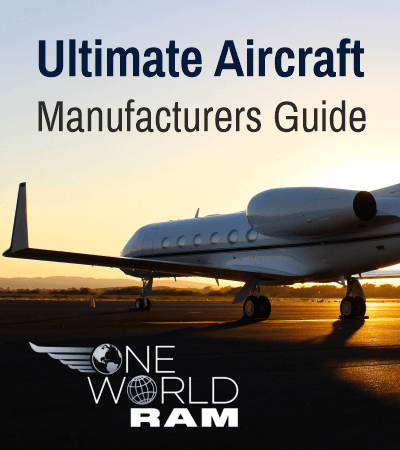Step into the future of aviation with Diamond Aircraft Industries, a pioneering force that’s reshaping how we think about flying. From revolutionary composite materials to hybrid-electric innovations, discover how this aviation leader is creating safer, more efficient, and environmentally conscious aircraft for tomorrow’s skies.
Diamond Aircraft Industries has established itself as a revolutionary force in aviation since 1981. As a privately held company, it has consistently redefined the boundaries of aircraft design and performance, securing its position among the leading manufacturers in General Aviation.
Their unwavering commitment to safety and efficiency has resulted in the development of superior single and twin-piston aircraft. Through the integration of advanced materials, aerodynamic excellence, and cutting-edge avionics, Diamond creates aircraft that excel in both performance and environmental responsibility.
What is a Diamond Airplane?
A Diamond Airplane represents the convergence of modern aviation engineering excellence. These aircraft stand out for their:
- Sleek, aerodynamic designs optimized for performance
- Advanced composite material construction
- State-of-the-art propulsion systems
- Industry-leading safety features
- Superior fuel efficiency compared to traditional designs
Historical Development of Diamond Airplanes
Since its inception in 1981, Diamond Aircraft has achieved numerous groundbreaking milestones. The development of the E-Star marked a significant turning point, serving as a testing platform for advanced technologies and playing a crucial role in the evolution of their hybrid electric quad-tiltrotor prototype.
Innovative Features of Diamond Airplanes
Diamond’s fleet shares a common DNA of excellence, demonstrated through their revolutionary DA40 model. Certified in 1997, this four-seater aircraft showcases Diamond’s commitment to innovation with:
- Dual engine options (petrol and diesel)
- Superior performance metrics
- Competitive pricing against higher-end competitors
- Advanced aerodynamic design
- Cutting-edge propulsion systems
Advanced Materials Used in Diamond Airplanes
Diamond’s success largely stems from their pioneering use of composite materials, particularly evident in the DA20 model. The construction features:
| Component | Material | Benefits |
|---|---|---|
| Wings and Fuselage | Glass Fiber Reinforced Plastic (GFRP) | Lightweight, durable structure |
| Bulkhead and Wing Spars | Carbon Fiber Reinforced Plastic (CFRP) | Enhanced strength, reduced weight |
Sustainability and Environmental Impact
Diamond Aircraft leads the charge in sustainable aviation through innovative developments:
- 2015 launch of hybrid-electric tiltrotor aircraft
- Development of hybrid electric quad-tiltrotor prototype
- Integration of eco-friendly propulsion systems
- Focus on reducing environmental impact
- Commitment to maintaining performance while improving sustainability
The Future of Aviation with Diamond Airplanes
As the third largest manufacturer in general aviation, Diamond continues to shape the industry’s future through groundbreaking innovations. Their development of automatic landing procedures and hybrid electric quad-tiltrotor prototype demonstrates their commitment to advancing aviation technology while prioritizing efficiency and environmental responsibility.
Trends in the Aviation Industry
The aviation industry is experiencing a remarkable transformation, with Diamond Aircraft leading the charge. The industry’s evolution is marked by several key trends:
- Enhanced focus on environmental sustainability and green aviation solutions
- Integration of hybrid-electric propulsion systems
- Development of advanced materials for improved efficiency
- Implementation of artificial intelligence in flight systems
- Automation of critical flight procedures, including landing operations
Diamond’s strategic expansion into new markets, exemplified by their DART 280 helicopter launch in 2017, demonstrates their adaptability to evolving market demands and commitment to diversification.
Potential Challenges and Opportunities
| Challenges | Opportunities |
|---|---|
| Historical setbacks (D-Jet program suspension) | Growing demand for eco-friendly aircraft |
| Market volatility | Advancement in hybrid-electric technology |
| Funding constraints | Innovation in automatic landing systems |
Despite past challenges, Diamond’s continued investment in research and development positions them strongly for future growth. Their focus on cutting-edge technologies and commitment to innovation demonstrates their resilience and adaptability in the dynamic aviation landscape.
Conclusion: The Impact of Diamond Airplanes on Aviation
Diamond Aircraft Industries has fundamentally transformed the aviation landscape through persistent innovation and technological advancement. Their journey from 1981 to becoming a pioneer in hybrid-electric aviation exemplifies their transformative impact on the industry.
The acquisition by Medrar Financial has provided renewed momentum for ambitious projects, particularly the D-Jet program. This financial backing, combined with Diamond’s innovative spirit, positions them to address critical industry challenges effectively.
- Pioneering sustainable aviation solutions
- Setting new standards in aircraft design and performance
- Advancing hybrid propulsion technology
- Enhancing flight safety through automation
- Reducing aviation’s environmental footprint
As the aviation sector continues to evolve, Diamond Aircraft’s contributions are shaping industry standards and practices, promising an exciting future for pilots, passengers, and the environment alike.





Leave a Reply